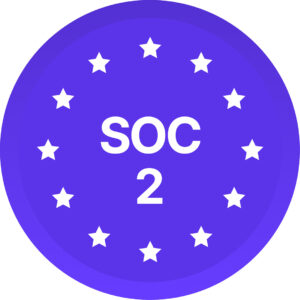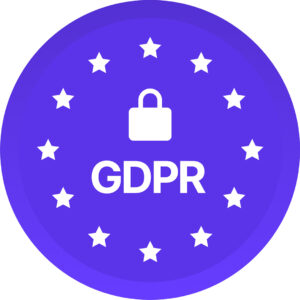According to the Canadian Internet Registration Authority (CIRA), Canada had approximately 1.3 million active business websites as of December 2019 (CIRA, 2020). That number will have grown significantly in recent years.
It’s essential to make sure that your website is accessible to everyone. Digital inclusion refers to the ability of people to access and use technology regardless of their age, income, education, or ability status. By fostering a digital inclusion mindset, you can benefit individuals with differing needs and improve the user experience for everyone. Here are some tips to help you create a more inclusive website.
Normalize Web Accessibility
Think of your website as a building and remove the barriers to entry and navigation. Ensure that your website is keyboard-navigable, and provide alternative text for images. Use headers to divide the text and ensure your content is laid out in a simple and logical flow. According to a survey conducted by WebAIM, 98.1% of the top million websites have at least one WCAG 2.0 failure. By ensuring that your website is WCAG compliant, you can differentiate your website from others and provide an inclusive user experience. (WebAIM, 2021)
Provide Alternatives
Make it easy for your visitors to interact with your website without the need to interact with another human. Provide a toll-free number in a prominent place, order forms that can be sent back by mail or fax, and contact forms that can be filled out online. Also, provide a way to contact a human if required. This way, you can cater to the needs of all your visitors, regardless of their preferences.
Use Inclusive Language
Keep your language simple, straightforward, and well-organized. Avoid jargon and acronyms, and use text-to-speech technology to review your document to catch your mistakes. This will help you to reach the audience you are trying to reach. Inclusive language also refers to avoiding terms that may be offensive or exclusionary to specific groups.
Rethink Your Content Structure
Break up large blocks of text into smaller chunks and use headers to divide up text. Ensure that your content is laid out in a simple and logical flow that is easy to read. According to the Nielsen Norman Group, users read only about 20% of the words on a web page. By simplifying your content and making it more scannable, you can make it easier for your visitors to find what they want.
Use Alt-Text and/or Alt-Descriptions
If you need to include images, include the alt-text field. There is also an alt-description option that gives more detail and is helpful for more complex illustrations, such as graphs or charts. Ensure your data is laid out within a table so the screen reader can be navigated logically. Alt-text is vital for individuals with visual impairments who use screen readers to navigate the web. According to a study by WebAIM, 76.1% of respondents rated alt-text as very important for web accessibility. (WebAIM, 2019)
Descriptive Labels in Forms
Ensure the form only includes the information you need to process the request. Make sure the form is laid out with a simple and logical flow. Descriptive labels indicate the purpose of the form and its respective sections and clarify how to operate it correctly. By using descriptive labels, you can make it easier for everyone to fill out your forms, regardless of their cognitive or physical abilities.
Consider Assistive Technology
Assistive technology is a term that refers to devices or software used to improve the ability of individuals with disabilities to access digital content. By considering assistive technology in the design and development of your website, you can help to ensure that your website is accessible to as many people as possible.
Test Your Website’s Accessibility
Testing your website for accessibility issues is an essential step in ensuring that it is inclusive to everyone. Many online tools and resources can help you test your website’s accessibility, such as the Web Accessibility Evaluation Tool (WAVE) and the AChecker. These tools can help you identify and fix accessibility issues such as missing alt-text or improper use of headers.
Additionally, you can ask individuals who use accessibility technology to test your website and provide feedback. This can be done through accessibility user testing services or by contacting advocacy groups in your area. Incorporating feedback from users with disabilities can help you identify areas where your website can be improved to serve their needs better.
Continuously Update and Improve Your Website
Digital inclusion is an ongoing effort, and it’s crucial to update and improve your website’s accessibility continuously. As technology evolves, new tools and techniques for accessibility become available, and it’s essential to stay up to date with these changes. Additionally, as your website evolves and new content is added, it’s vital to ensure that the content remains accessible and inclusive to everyone.
Conclusion
Fostering a digital inclusion mindset on your website is essential to ensure it is accessible to everyone. To make your website easy to use and accessible to everyone, regardless of their needs, you can take several steps. These include normalizing web accessibility, providing alternatives, using inclusive language, rethinking your content structure, using alt-text and/or alt-descriptions, providing descriptive labels in forms, considering assistive technology, testing your website’s accessibility, and continuously updating and improving your website.
_______
References
Canadian Internet Registration Authority (CIRA). (2020). Canada’s internet factbook 2020. https://www.cira.ca/factbook/2020/overview/active-business-websites
W3C Web Accessibility Initiative. (2018). Introduction to Web Accessibility. Retrieved from https://www.w3.org/WAI/fundamentals/accessibility-intro/
WebAIM. (2019). Survey of Web Accessibility Practitioners #7. Retrieved from https://webaim.org/projects/practitionersurvey7/
Nielsen Norman Group. (2020). How Little Do Users Read? Retrieved from https://www.nngroup.com/articles/how-little-do-users-read/
WebAIM. (2020). Alternative Text. Retrieved from https://webaim.org/techniques/alttext/
Deque Systems. (2020). What is Assistive Technology? Retrieved from https://www.deque.com/what-is-assistive-technology/
WAVE Web Accessibility Evaluation Tool. (n.d.). Retrieved from https://wave.webaim.org/
AChecker Accessibility Checker. (n.d.). Retrieved from https://achecker.ca/checker/index.php
This blog by Ian More was originally published by Diversio EDU (formerly CCDI Consulting) in January 2023.
Our newsletter and blogs feature personal opinions and diverse viewpoints. We aim to create a safe space for our team to share their perspectives on diversity and inclusion. Please note that individual articles may not align with every reader’s view or comprehensively cover a topic. We appreciate the diversity of opinions and respect our team’s contributions.

